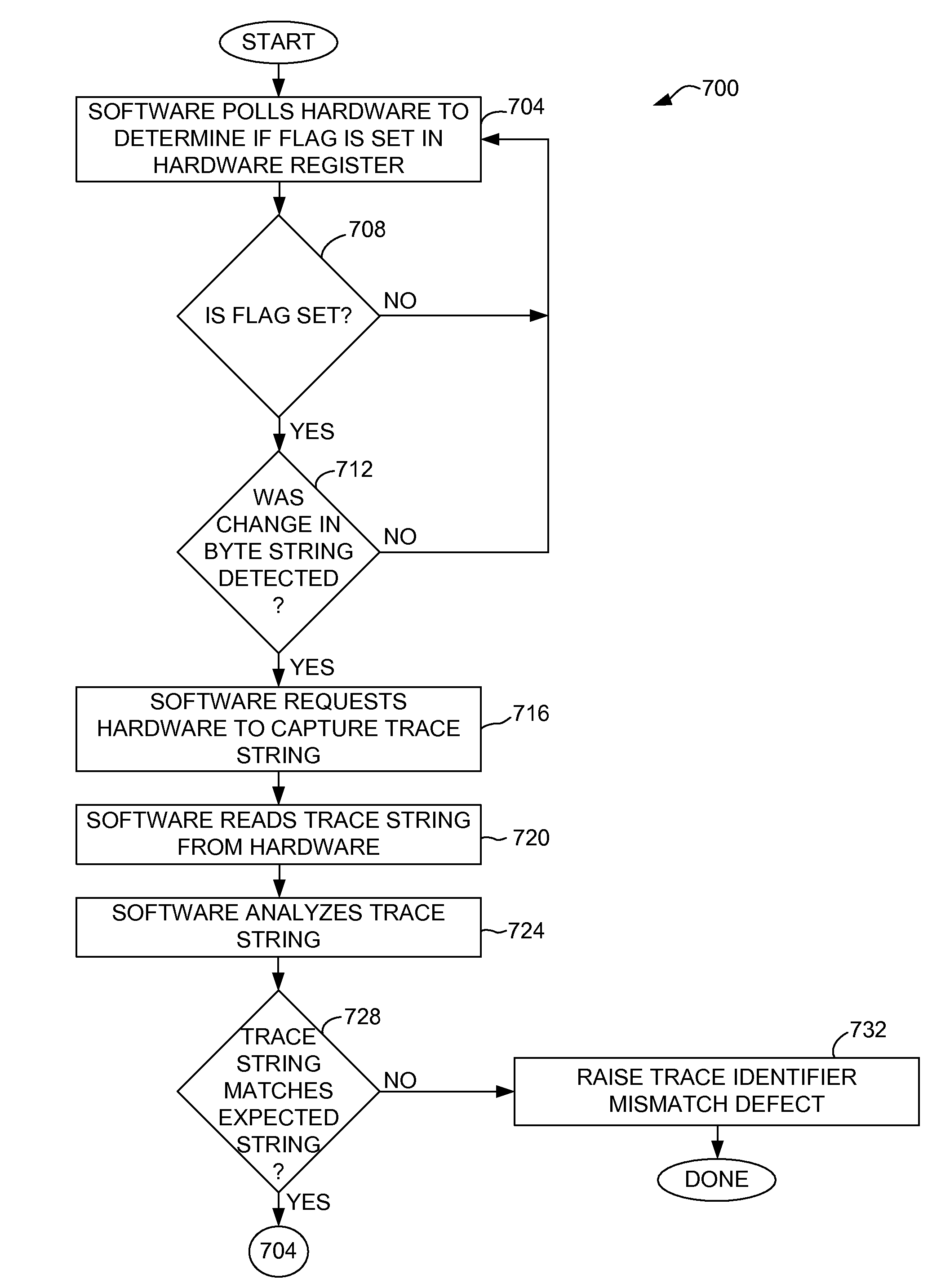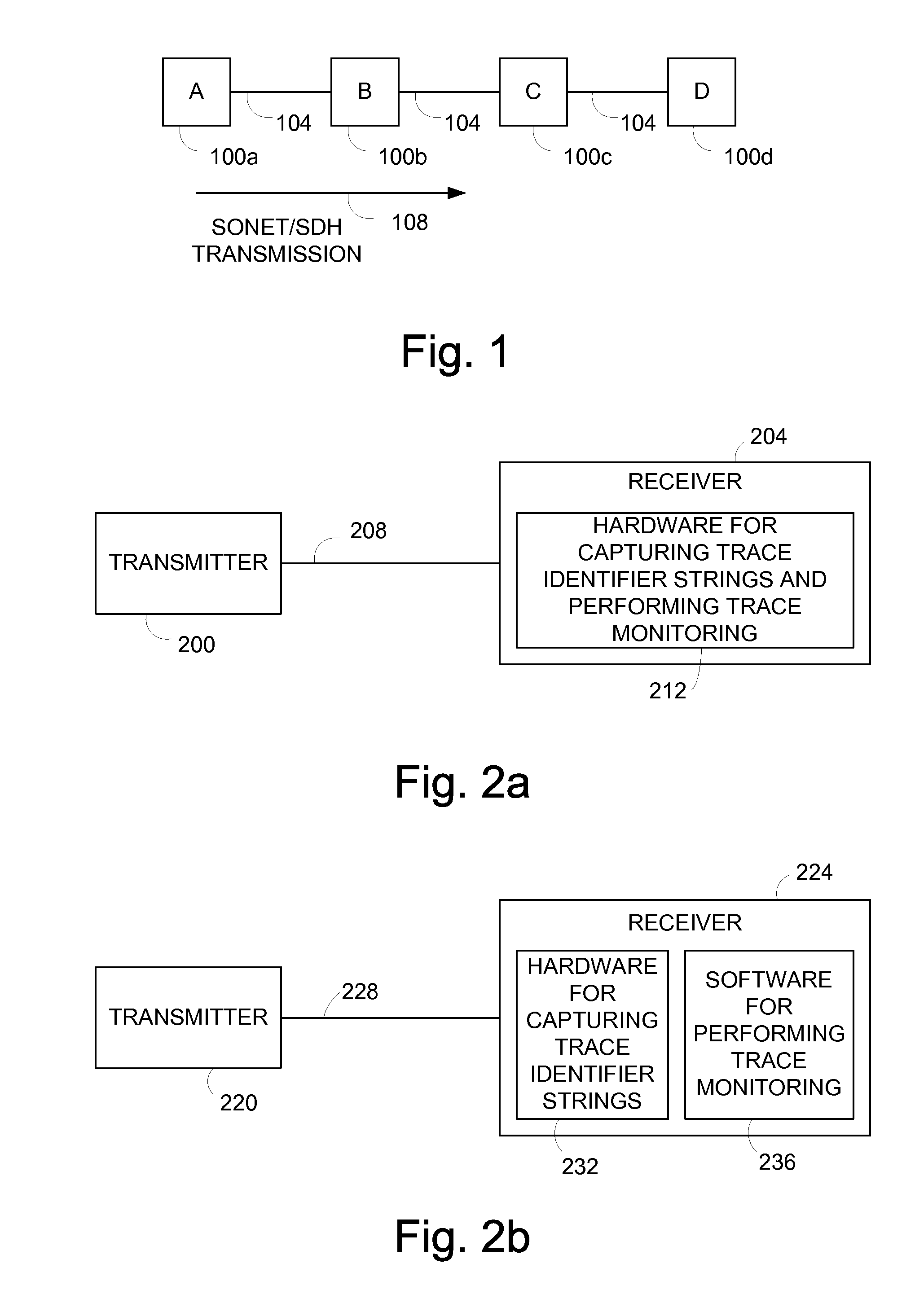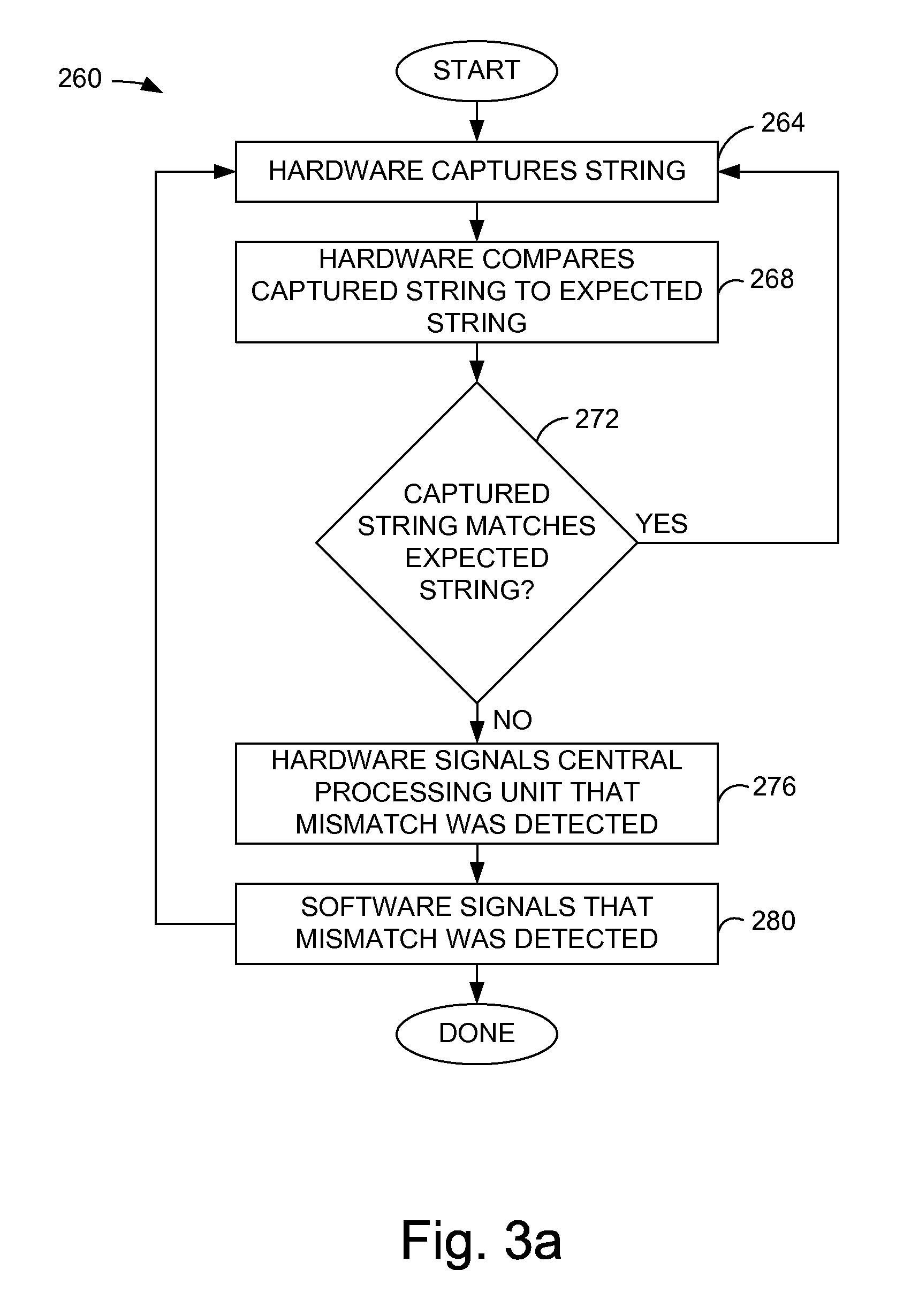Two-stage detection of trace identifier mismatches
a trace identifier and mismatch detection technology, applied in the field of network systems, can solve the problems of increasing hardware memory requirements of the trace identifier mismatch detection system, increasing the demand for data communication services, and increasing the number of instruments. the effect of detecting trace identifier mismatches within the network
- Summary
- Abstract
- Description
- Claims
- Application Information
AI Technical Summary
Benefits of technology
Problems solved by technology
Method used
Image
Examples
Embodiment Construction
[0032]Monitoring trace strings such as J0, J1, and J2 path trace strings generally require a substantial amount of data processing. Monitoring a single trace string associated with a circuit or a path generally requires capturing a continuous string of bytes, determining a format of the string, determining the start of the string, and comparing the captured string with an expected string to identify a mismatch. In general, systems used to monitor trace strings have significant hardware requirements, and utilize a relatively significant amount of resources and time in order to detect a defect associated with a circuit. Further, when multiple formats are to be supported, e.g., formats such as both a synchronous digital hierarchy (SDH) format and a synchronous optical network (SONET) format, the hardware generally needs to be changed.
[0033]By using hardware to detect changes in trace information, and software to analyze substantially only those traces in which changes have been detecte...
PUM
 Login to View More
Login to View More Abstract
Description
Claims
Application Information
 Login to View More
Login to View More - R&D
- Intellectual Property
- Life Sciences
- Materials
- Tech Scout
- Unparalleled Data Quality
- Higher Quality Content
- 60% Fewer Hallucinations
Browse by: Latest US Patents, China's latest patents, Technical Efficacy Thesaurus, Application Domain, Technology Topic, Popular Technical Reports.
© 2025 PatSnap. All rights reserved.Legal|Privacy policy|Modern Slavery Act Transparency Statement|Sitemap|About US| Contact US: help@patsnap.com



